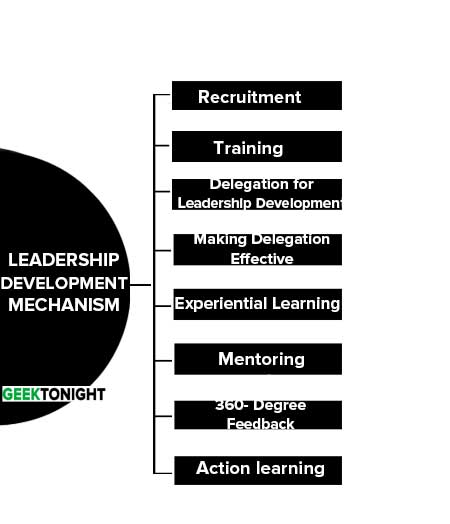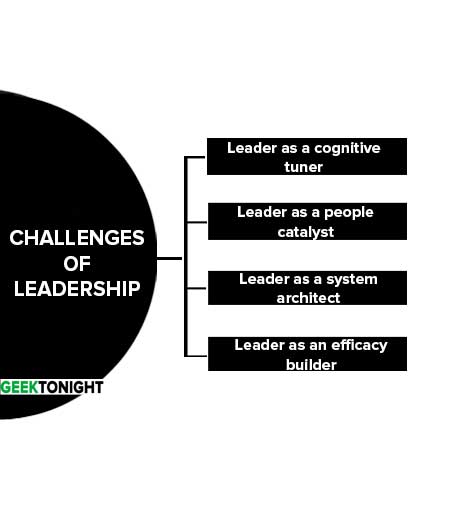What is Leadership Development?
Leadership development is the process implemented to impart knowledge, skills, attitudes and visions to managerial personnel discharging roles of leaders to support them and manage the work successfully and professionally.
Table of Content
Importance of Leadership Development
The utmost need in our country today is leadership. Pareek (2008) states that anyone can lead at any level; there are two excuses. It hardly matters who is on the front line or top line. The person should be worthy at leading whatsoever be their level in the company.
The leadership development is essential for the following reasons:
- Due to high attrition, careerism, employee morale and loyalty is declining.
- Due to reduction in citizenship behaviors in an organization. Leadership Development.
- Role of leaders is crucial for the company to take social and public responsibility.
- Leadership is essential for the organizations to deal with complexity of operating environment and ever-increasing size and complexity of organizations.
- Intricacies in labour union-management relations.
- The technological and industrial scenario is going through rapid changes due to which the managers are facing complicated problems that are arising out of automation, intense market competition, growth of new markets, rising customer consciousness, enhanced labor participation.
Objectives of Leadership Development
Based on the observations and concepts and also with the aim to achieve objectives, the organizations arrange leadership development programs which are as follows :
- To facilitate the required number of leaders to the organization who are having the skill to meet the present and future organizational needs.
- To inculcate leader capabilities among managers a sense of self – dependency, achievement, and affiliation to team members.
- To inspire leaders and make them grow to meet the challenges, to cope up with the changes as well as handle difficult situations.
- To release their responsibilities with better performance.
- For sustained improved performance and competence.
Leadership Development Mechanism
Leadership development is the process implemented to impart knowledge, skills, attitudes, and visions to managerial personnel discharging roles of leaders to support them and manage the work successfully and professionally.
Manager can be transformed into leaders, and leaders are further developed through certain structured mechanisms like recruitment, training, delegation, 360- degree appraisal, mentoring, and other developmental mechanisms (Prateek 2008).
Following are mechanism leadership development:
- Recruitment
- Training
- Delegation for Leadership Development
- Making Delegation Effective
- Experiential Learning
- Mentoring
- 360- Degree Feedback
- Action learning

Recruitment
The leadership development basically starts with the selection of people who are interested in learning, unlearning, and relearning. They must have the learning capability to develop qualities of leadership very fast.
By processes like using psychometric assesment, interviews, simulation exercises; assessment centres the potential leaders can be identified during the recruitment process.
Training
To improve the leadership skills of people, systematic training programs are extensively used. The leader requires certain traits like integrity, loyalty, commitment, energy, decisiveness, and selflessness.
Leadership training programs can be for a shorter duration where the workshops are conducted to induce a particular skill or to induce a trait. Long term programs are also offered for developing several skills and traits. At different levels of the organization, leadership require different focal competence to be developed.
Delegation for Leadership Development
A formal way of improving leadership capabilities is to delegate responsibilities and tasks. The ability and skill-set of the person to whom the responsibility is to be delegated must be carefully evaluated beforehand.
Once empowered through delegation, the employee is likely to apply his judgment in the best interest of the organization.
Making Delegation Effective
Delegation is not merely passing on the assignment relatively it is a deliberate process. The scope of role boundaries should be decided upon jointly so that it can delegate successfully. The senior need to make gap analysis with regard to ability and knowledge and try arranging to fill the gap.
Experiential Learning
Experiential learning is the process of learning from direct experience. This is highly suited to the acquisition of practical skills, where trial and error and the opportunity to practice techniques related to real tasks is essential. Experiential learning, the way of acquiring skills, is integral to vocational education in many countries.
The few examples of experiential methods of learning are on- the job training, equipment simulators, games and simulation, case study and analysis, role-playing, behavioral modelling, sensitivity.
Mentoring
It is a partnership between two people (mentor and mentee) who are working in a similar field or sharing similar experiences. Mentor generally happens to be significantly senior than mentee.
Focus of mentoring relationship is to build a long term perspective in the growth plan of mentee. It is a powerful personal development and enabling tool. Mentoring is an effective way to help people to build a larger perspective for their careers.
360- Degree Feedback
This appraisal system delivers adequate inputs to choose upon the weaknesses of a person and initiate steps to overcome them. The purpose of 360 – degree appraisal is to support each individual to understand his/her strength and weakness, and also to give insights into aspects of his/her work demanding professional development.
The 360-degree feedback is basically used as an assessment for personnel development rather than evaluation.
Action learning
Action Learning is an approach to the development of people in organizations which takes the task as the vehicle for learning. It is based on the premise that there is no learning without action and no sober and deliberate action without learning.
The method has three main components:
- people who accept responsibility for taking action on a particular issue; problems,
- the task that people set themselves,
- and a set of six or so colleagues who support and challenge each other to make progress on problems.
Action Learning implies both self-development and organization development.” Mike Pedler (1991). Action learning requires a group of 6-8 people who meet up regularly and help each other to learn from their experience is known as an action learning set.
Challenges of Leadership
Each and every individual is not born with the same potential to lead well; fairly some may not have the skill to lead at all. Leaders are the one who makes a difference and has to perform different roles.
The failure of leadership happens when the person is not able to perform effectively the roles. Ramnarayan (2007) highlights four challenges of leadership – leader as cognitive tuner, People catalyser, System architect, Efficiency builder.
These challenges of leadership are explained in as follows:
- Leader as a cognitive tuner
- Leader as a people catalyst
- Leader as a system architect
- Leader as an efficacy builder

Leader as a cognitive tuner
As a cognitive tuner, a leader has to escalate the changes. The employees need behavioural transformation for the success of the change effort. It is also essential for them to behave in such a manner that would be qualitatively different from the way they used to be.
Leader as a people catalyst
Leaders are mandatory to build supporting coalitions, calculate interests of people in different set-ups, modify people’s incentives for change, frame and create change messages in a way that induces support, also to introduce a process which is open, transparent, and inclusive, consulting as widely as possible. With these proceedings, it is concluded that a leader must be a people catalyser.
Leader as a system architect
According to Ramnarayan (2007) as a system architect, the leaders are the one who creates cross-functional linkages in the organization, create new practices for enhancement, and execute change.
Leader as an efficacy builder
A leader has to form change capacity. The Indian organizations have also started operating in a global village due to the following of liberalization process. To cope with the modifications due to the changing business scenario a leader has to finally build change capacity.
Reference
- Alimo-Metcalfe, B. (1998). 360-degree feedback and leadership development. International Journal of Selection and Assessment, 6 (1), 35- 44.
- Atwater, L. and Waldman, D. (1998) 360-degree feedback and leadership development. Leadership Quarterly, 9, 423-426.
- Hartle, F. and Smith, K. (2004) Growing Tomorrow’s Leaders: The Challenge, Nottingham: NCSL.
Go On, Share & Help your Friend
Did we miss something in Human Resource Tutorial or You want something More? Come on! Tell us what you think about our post on Leadership Development in the comments section and Share this post with your friends.
Human Resources Tutorial
(Click on Topic to Read)




